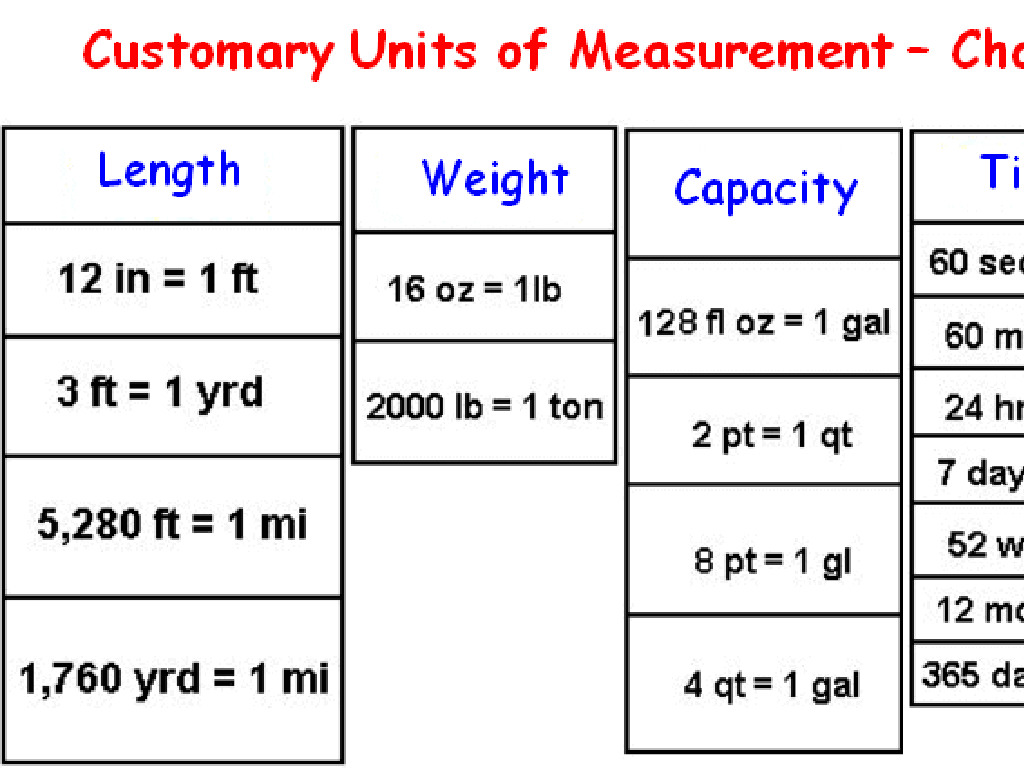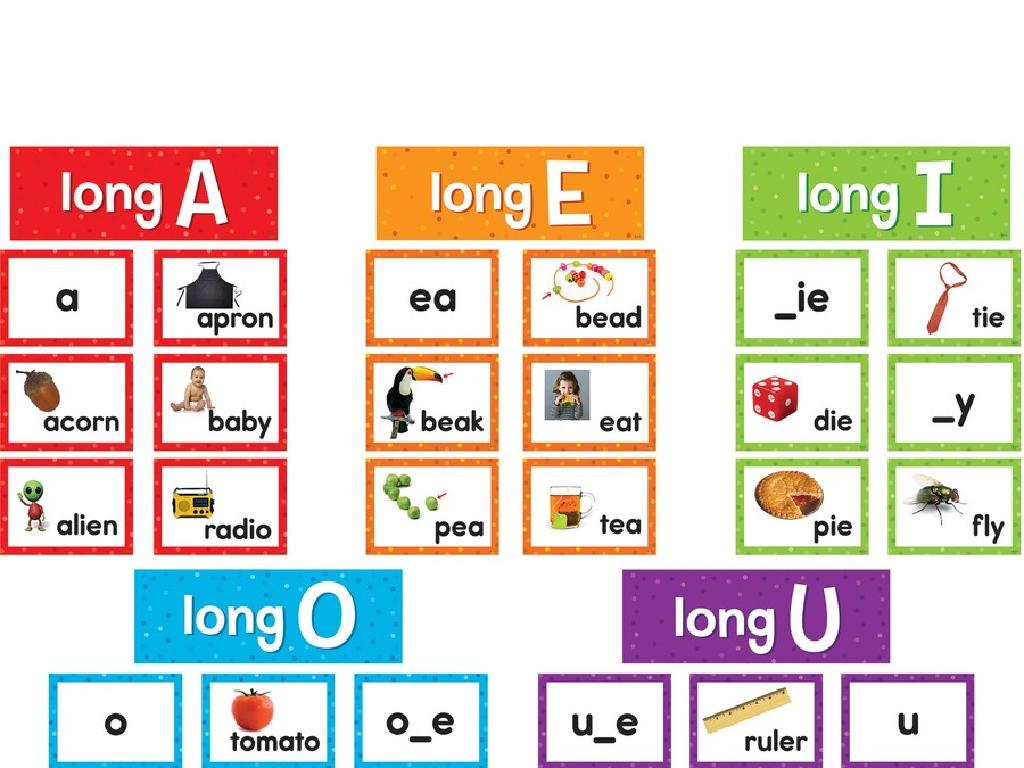Evaluate Tests Of Engineering-Design Solutions
Subject: Science
Grade: Sixth grade
Topic: Engineering Practices
Please LOG IN to download the presentation. Access is available to registered users only.
View More Content
Evaluating Engineering-Design Tests
– Importance of testing in engineering
– Testing verifies if designs meet criteria and function as intended.
– Tests lead to design improvements
– Engineers make modifications based on test outcomes to enhance designs.
– Analyzing test results
– Results determine if the design meets the requirements and safety standards.
– Learning from failed tests
– Failures provide valuable lessons and insights for future design enhancements.
|
This slide introduces students to the critical role that testing plays in the engineering design process. Emphasize that testing is not just about finding what works, but also understanding why certain designs fail. Encourage students to think like engineers who use tests as a tool to refine and perfect their designs. Discuss how analyzing test results helps in ensuring that the final product is safe, efficient, and meets the user’s needs. Share examples of famous engineering projects where testing played a key role in the development process. This will help students appreciate the iterative nature of engineering and the value of learning from mistakes.
Understanding Engineering
– Define engineering
– Engineering is applying scientific principles to design and build.
– Explore the design process
– Steps: Ask questions, imagine possibilities, plan design, create model, and improve the design.
– Engineering in the real world
– Bridges, smartphones, and eco-friendly homes are engineering feats.
– Importance of improvement
– Iteration is key to perfecting engineering solutions.
|
This slide introduces students to the concept of engineering and its significance in the world around us. Begin with a definition of engineering, emphasizing its role in applying science and math to solve problems. Discuss the engineering design process as a series of steps that engineers use to come up with solutions: asking the right questions, imagining possible solutions, planning designs, creating models or prototypes, and then improving the design based on testing. Provide real-world examples that are relatable to students, such as the construction of bridges, the development of smartphones, or the creation of eco-friendly houses. Highlight the importance of the improvement step, where engineers learn from their tests to make better designs. Encourage students to think of themselves as young engineers who can use this process to tackle challenges.
The Role of Testing in Engineering
– Importance of testing in engineering
– Testing ensures designs meet safety and functionality standards.
– Varieties of engineering tests
– Stress tests, safety tests, and usability tests are commonly used.
– Testing improves design quality
– Iterative testing leads to refinements and robust solutions.
– Case study: Bridge testing
– Example: How bridge models are tested for load-bearing capacity.
|
Testing is a fundamental step in the engineering design process, as it validates the safety, functionality, and reliability of a solution before full-scale production or implementation. Introduce students to the concept of iterative testing, where engineers test, analyze results, and refine designs. Discuss different types of tests, such as stress tests to check material strength, safety tests to ensure user protection, and usability tests to gauge consumer satisfaction. Use a case study, like bridge testing, to illustrate how models are subjected to simulated conditions to test their load-bearing capacity and overall structural integrity. This real-world example can help students understand the tangible benefits of thorough testing in engineering.
Case Study: Bridge Design Evaluation
– The challenge of bridge building
– Consider weight capacity and materials
– Testing bridge model strength
– Simulate loads and stress points
– Analyzing results for improvements
– Review which parts failed and why
– Iterative design process
– Use findings to refine the bridge design
|
This slide introduces students to the engineering challenges involved in designing a bridge. Emphasize the importance of considering factors like weight capacity and material choice. Discuss how engineers test models for strength by simulating various loads and identifying stress points. Encourage students to think critically about how analyzing these test results can lead to improvements in the bridge design. Highlight the iterative nature of the design process, where each test provides valuable feedback for the next design iteration. Activities can include creating simple bridge models using classroom materials and testing their strength, followed by a discussion on what design changes could be made to improve their models.
Your Turn: Design a Paper Tower
– Activity: Build a paper tower
– Materials: Paper, tape, scissors
– Objective: Tallest stable tower
– Evaluate: Test tower’s stability
– After building, we’ll test each tower to see how well it stands up to challenges.
|
This class activity is designed to give students hands-on experience with engineering principles. Provide each student or group with the same amount of paper, tape, and scissors. The objective is to create the tallest tower that can remain standing on its own. Encourage creativity and problem-solving as they figure out how to construct their towers. After building, conduct tests to evaluate the stability of each tower. Possible tests include a gentle breeze from a fan, a soft shake of the table, or placing a small object at the top. Discuss with the class why some towers were more stable than others, linking the discussion back to engineering-design principles and the importance of testing and evaluating designs.
Testing Our Paper Towers: Evaluating Stability
– Conduct stability tests on paper towers
– Gently push from different angles, observe sway or fall
– Measure your tower’s height accurately
– Use a ruler or tape measure from base to top
– Discuss factors affecting tower stability
– Materials, weight distribution, base area, and design
– Record observations and conclusions
|
This slide is part of an activity where students will apply engineering principles to test the stability of paper towers they’ve constructed. The objective is to understand how different factors contribute to the structural integrity of their designs. Students should gently apply force to their towers to test for stability and measure the height using a ruler or tape measure. Discuss with the class how the choice of materials, the distribution of weight, the size of the base, and the overall design can affect the tower’s ability to remain upright. Encourage students to record their observations and draw conclusions from the tests. This hands-on activity will help them grasp the importance of testing and evaluating in the engineering design process.
Evaluating Our Engineering Designs
– Discuss design successes and failures
– Which parts worked well? Which didn’t?
– Learn why iteration is key
– Iteration means repeating to make better
– Share feedback for improvements
– Constructive criticism helps us grow
– Embrace the design process
– Every design is a step towards success
|
This slide aims to guide students through the evaluation phase of their engineering design projects. Start by encouraging open discussion about the aspects of their designs that were successful and those that were not, fostering a non-judgmental environment. Emphasize the importance of iteration, the process of refining designs through repeated trials and modifications. Facilitate a session where students can share constructive feedback with each other, suggesting possible improvements. Highlight that feedback is a valuable tool for learning and growth. Lastly, reinforce the concept that the design process is iterative and that each attempt, whether successful or not, is a learning opportunity and a step towards a better solution. This will help students understand that setbacks are a natural part of problem-solving in engineering.
Reflecting on Engineering Tests
– Reviewing our test outcomes
– Applying knowledge to new designs
– Use lessons learned to improve future engineering projects
– Discussing the design process
– Share insights on steps of the design process and its importance
– Enhancing our engineering skills
|
This slide is meant to facilitate a class discussion reflecting on the outcomes of engineering tests conducted by the students. Start by asking the students what they learned from their tests, encouraging them to think critically about their results. Then, guide them to consider how they can apply this newfound knowledge to other designs, promoting the idea of transferable skills and continuous improvement. Initiate a group discussion on the engineering design process, allowing students to share their experiences and insights on each step, from defining the problem to testing and improving their solutions. This will help reinforce their understanding of the iterative nature of engineering and the value of collaboration and communication. Provide examples of how engineers in the real world go through similar processes and how they learn from each test to refine their designs.
Wrapping Up: Engineering Design Reflection
– Summarize key engineering concepts
– Reflect on the paper tower activity
– Think about the steps you took and the outcome
– Consider design improvements
– What changes could make your tower stronger or taller?
– Homework: Write a reflection
– Describe your design process and how you would enhance it
|
As we conclude today’s lesson on engineering-design solutions, students should summarize the key concepts learned, such as the design process, testing, and evaluating solutions. For homework, they are to write a reflection on the paper tower activity, considering what worked well and what didn’t. Encourage them to think critically about how they could improve their design if they were to do it again. This reflection will help reinforce today’s learnings and promote a growth mindset. Provide guidance on structuring their reflection, perhaps with an introduction, body paragraphs for each key point, and a conclusion.






